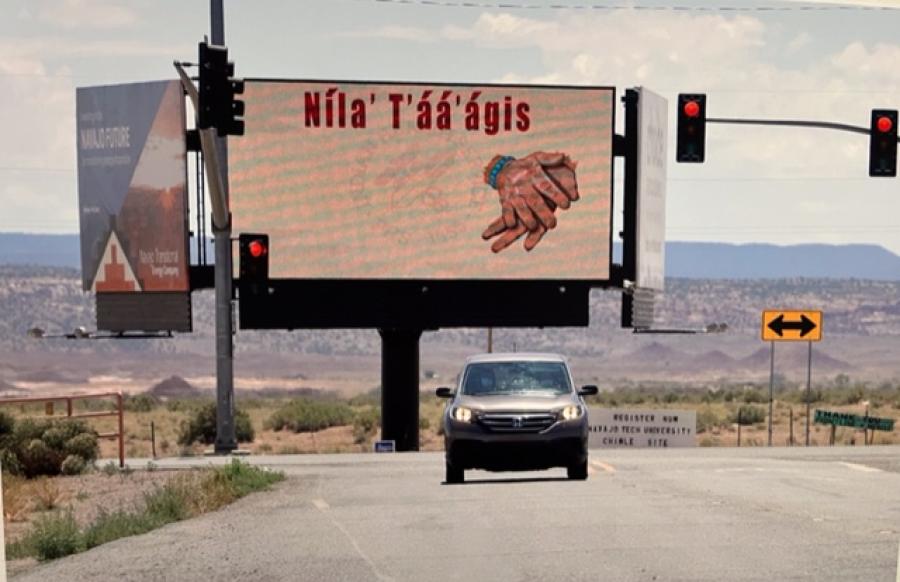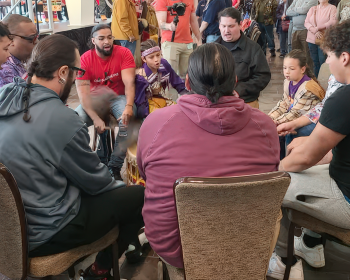In the political confrontations to resolve fish and wildlife competition among subsistence, commercial, and sports hunting and fishing interests, Alaska Natives have learned that compromise translates into Native people giving up something they possess while non-Native people give up something they want. According to the Native view, this form of compromise has resulted in the continual erosion of their political rights, severely reduced subsistence allocations of hunting and fishing resources, and granted non-subsistence users more than 95% of all fish and wildlife harvests. As a consequence, Alaska Natives have justifiably adopted the stance articulated repeatedly as "no further compromises" in the ongoing battle between federal and state subsistence laws. Native people view subsistence as the basis of their cultural and economic survival and they assert that further erosion of subsistence protections and their rights and access to hunting and fishing resources threaten their very livelihood and cultural existence.
A History of Compromise
Prior to the arrival of EuroAmericans, Alaska's indigenous population harvested the resources of the land and waters constrained only by environmental conditions, their technological capabilities, and cultural ideologies and practices. New, extraneous laws and regulatory regimes were added to these limiting factors with the arrival of the American government. The laws were implemented as a result of an increasing competition for fish and wildlife stocks brought with the increase in the non-Native population stimulated by the 1970 TransAlaska oil pipeline boom. The historical facts clearly reveal that the expansion of commercial and sports hunting and fishing industries brought laws and regulations that favored commercial and sports hunting and severely reduced Native subsistence harvests.
In 1971, when Alaska Natives surrendered their aboriginal title to land under the Alaska Native Claims Settlement Act (ANCSA), they assumed that Congress would live up to its obligation to protect Alaska Native subsistence cultures and economies that the federal government had recognized since the 1867 Treaty of Cession. The final Senate ANCSA bill referred to the protection of Native subsistence hunting, fishing, trapping, and gathering rights and required the Secretary of the Interior to designate public lands around Native villages as "subsistence use areas." However, these provisions were dropped by the congressional conference committee in response to a request by the state government. ANCSA extinguished aboriginal title and hunting and fishing rights, but the legislative history indicates that Congress fully expected the Secretary of Interior and the state of Alaska to take any action necessary to protect the subsistence needs of Natives.
As resource competition intensified throughout the 1970s, it became clear that Congress must protect the subsistence economies and cultures of Alaska Native people. The early drafts of the 1980 Alaska National Interest Lands Conservation Act (ANILCA) made specific references to Alaska Native and Native village subsistence protections. However, the competition between Native subsistence and non-Native commercial and sports hunters and fishers erupted into a full scale confrontation. Native people sought to ensure that subsistence protections applied specifically to Natives while the state of Alaska and primarily the non-Native sports hunters and fishers advanced the concept of a subsistence preference defined by geography of residence. Although Congress invoked "its constitutional authority over Native affairs and its constitutional authority under the property and commerce clauses to protect and provide the opportunity for continued subsistence" in drafting ANILCA, the resulting compromise contained in Title VIII was a subsistence priority for both Native and non-Native "rural residents." Native subsistence protections had been diminished to rural geographical regions, excluded Native communities engulfed by urban development, and included non-Native rural residents.
ANILCA further granted the state government the option of continuing to regulate subsistence on federal lands in addition to its own and private lands, if the Alaska legislature complied with the ANILCA rural subsistence preference throughout Alaska. The 1980 ANILCA requirements, the state's failure to comply with ANILCA, and the state's management regime that favored commercial and sports interests set the stage for 18 years of public debate and legislative and judicial confrontations between the pro-subsistence and anti-subsistence interest groups who seek to remove the rural preference from ANILCA.
Preventing Further Erosion
Alaska Natives have been criticized by anti-subsistence interests who suggest Natives are responsible for the impasse between federal and state management of fish and wildlife because they oppose amendments to ANILCA. They have been subjected to continual political pressure to compromise their subsistence rights and protections afforded under ANILCA and to support amendments that would change `rural' to more restrictive language. Alaska Natives, on the other hand, overwhelming support an ANILCA amendment that would recognize a Native subsistence priority. They have learned that the ANILCA rural preference does not offer long-term protection against the process of non-Native urbanization that has already engulfed several formerly indigenous communities.
Despite the weaknesses of ANILCA, Alaska Natives did not advance amendments to ANILCA, fearing that opening up the amendment process would result in further diminishment of subsistence protections. In a statewide 1992 Subsistence Summit, Alaska Natives adopted a policy articulated as "no net loss" of the flawed subsistence protections offered by ANILCA and the judicial decisions that defined various aspects of the legal protections.
The year 1997 was a year of significant challenges to Native people and their efforts to protect their subsistence lifestyles. The governor of Alaska established a seven member Subsistence Task Force that excluded any representative chosen by Native people. The Task Force process was never a negotiation by or with Native people, but rather about Native people. The result was, predictably, a series of policy losses for village people through proposed amendments to ANILCA, a complying state statute, and a state constitutional amendment to permit the latter.
In late August 1997, 900 Alaska Natives gathered for three days in Anchorage to review the Task Force proposal, despite the fact that it was held during one of the most intense subsistence seasons of the year. The Subsistence Summit adopted seven guiding principles and 12 policy recommendations that were viewed as necessary to protect their subsistence economies and cultures. These principles and recommendations emphasized establishment of a legal system based upon principles which achieve:
1. Full participation and consent of the Alaska Native community, including hearings in villages in each region;
2. A subsistence priority based on Alaska Native, community, religious/spiritual, nutritional, medicinal, and cultural practices rather than an individualized or a needs-based system;
3. Only amendments which enhance subsistence rights and maintain federal oversight to at least its current level;
4. Co-management with equal state, federal, and tribal involvement;
5. Full recognition of customary and traditional uses including religious/spiritual and ceremonial;
6. Effective comprehensive reform of the state management system;
7. Recognition that subsistence is a basic indigenous right.
Alaska Native leaders traveled to Washington, D.C. in late September 1997 to stop the ANILCA amendatory thrust by the Task Force and to change the proposed amendments to reflect their summit's Guiding Principles and policy recommendations. Although Native people were able to meet with their congressional delegation and the Solicitor of the Department of Interior, in the end they were excluded from the negotiating process to amend ANILCA and were only allowed to slip recommendations under the door. To no avail, the Alaska Federation of Natives (AFN) wrote to President Clinton requesting that he veto the Fiscal Year 1998 Interior Department appropriation which contained the ANILCA amendments which will be implemented if the state of Alaska adopts a constitutional amendment and subsistence statute.
As the state of Alaska grapples with a state constitutional amendment and subsistence statute, the future of legal protections for subsistence communities is uncertain. What is certain is that without legal protections, the subsistence lifestyles of Alaska Native peoples will be further threatened. The steady population growth, development, and the increased competition for fish and wildlife are certain to undermine rural subsistence economies and their cultural survival. Alaska Native people are powerless to stem the demographic pressures and the increased sports and commercial harvests. However, they remain steadfast in their efforts to advance the 1997 Subsistence Summit Guiding Principles and recommendations. Yet the stark reality is that this minority indigenous population may ultimately be able to only minimize the damage to subsistence protections and lifestyles against the concerted political assaults.
To Alaska Native people, subsistence is more than an issue of allocating fish and wildlife resources. Subsistence represents the economic well-being of communities which have a minimal cash economy; it embodies their cultural values which recognize a special and spiritual relationship to their land and animals and unifies them as tribal groups through hunting, gathering, distributing, and sharing their harvests.
Article copyright Cultural Survival, Inc.



